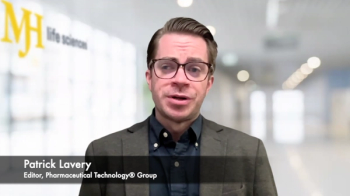
- Pharmaceutical Technology-06-02-2006
- Volume 30
- Issue 6
Consumed with Consumables
The laboratory supplier landscape is undergoing a radical makeover.
Efforts by major bio/pharmaceutical companies to consolidate their supplier bases are driving a new flurry of merger and acquisition (M&A) activity in the laboratory supplies industry. The new round of deal-making activity drives home the message that as Big Pharma changes the way it does business, the supplier landscape will undergo a radical makeover.
Jim Miller
The recently announced merger of Thermo Electron Corporation (Waltham, MA,
Fisher Scientific has been a major driver of consolidation of the laboratory supplies industry in recent years. Its major acquisitions include the 2003 purchase of Perbio for $733 million, the 2004 acquisition of Apogent Technologies for $3.9 billion, and the 2004 purchase of Oxoid for $330 million. It also has made several smaller acquisitions such as Dharmacon for $80 million in 2004 and Cellomics for $49 million in 2005.
Thermo and Fisher aren't the only companies consolidating the laboratory supplies space. Millipore Corporation (Billerica, MA,
Private-equity investors also are jumping into the research consumables market. Two venture capital firms, Grotech Capital and Ferrer Freeman & Company, announced in April that they are committing nearly $100 million to back Pelican Life Sciences (Huntersville, NC,
The rationales for the M&A activity in the laboratory supplies market are straightforward: economies of scale, synergies from cross-marketing of products, and clout in the procurement process. The combined companies will have large sales forces—7500 for Thermo Fisher Scientific, 1200 for Millipore—that will have much-expanded product lines to promote to their customers. One of the strengths of these combinations is that the merging companies have little duplication in their product offerings because one party is focused on instruments while the other is focused on consumables. The companies also expect significant cost savings: $200 million a year in the case of Thermo Fisher Scientific and $17 million annually for Millipore on a smaller cost base.
The merged companies are likely to enjoy big advantages in the procurement departments of major pharmaceutical companies. With the size of their catalogs and the volume of business they generate, the companies will be in unrivaled positions to negotiate preferred vendor deals. Deeply discounted pricing will be a major feature of those deals, but there probably will be other features that will tie the customer and the vendor closely together, including customized online catalogs, online buying, and reports on commodity usage that will help customers manage costs over time.
The strategic advantages of these laboratory supplies vendor combinations are so great that we should expect other competitors to announce their own combinations in due course. Consumables suppliers such as Invitrogen and Sigma-Aldrich undoubtedly will be shopping for, or in the sights of, equipment companies such as PerkinElmer, Agilent, and Applied Biosystems. The laboratory supplier landscape will be changing considerably in coming months.
Kendle acquires Charles River Labs clinical business
Also in May, there was a reminder that the same forces of consolidation at work in the laboratory supplies business are also at work in the contract-services arena. It was announced that Charles River Laboratories International (CRL, Wilmington, MA,
CRL obtained the Phase II–IV business as part of its 2004 acquisition of Inveresk Research Group, but CRL executives were never satisfied with its operating results, despite having made significant improvements to its profitability. The clinical business generated $131 million in revenues in 2005, representing 12% of corporate revenues, but only $6 million in operating income—just 3% of corporate operating income.
In justifying the divestiture, CRL executives said that the business was too small to compete effectively against much larger CROs and that it did not leverage the company's core competencies, which are concentrated in animal testing and toxicology. With a limited network of offices outside the United States and Europe, CRL's clinical business is at a considerable disadvantage relative to competitors with extensive networks in Asia and Latin America and cannot compete effectively for preferred-provider status with major pharmaceutical companies. CRL executives alluded to these competitive disadvantages in its discussion of the sale.
FYI
For Kendle executives, the deal represents a major step in achieving their strategic objective of $500 million in revenues. Chairman and CEO Candace Kendle said that the acquisition will propel the company into the position of the fourth largest Phase II–IV CRO (behind PPD, Quintiles, and Parexel). The company expects the acquisition to add as much as $150 million to its revenues in 2007. Executives said the merging businesses had little overlap among large pharmaceutical clients and would have enhanced coverage of key therapeutic areas. Though it helps address the critical issue of scale, the CRL acquisition doesn't address Kendle's need to expand its coverage of the Asia-Pacific and Africa regions, which Kendle executives readily admitted.
Acquisitions of large Phase II–IV CROs have been rare and are not without risk. The main assets in such deals are the study contracts and the cadre of experienced staff, but contracts expire or are cancelled, and employees can leave for other companies. Kendle's willingness to do the deal reflects its willingness to take the risk to achieve the size necessary to remain a first-tier competitor in the clinical CRO industry.
Jim Miller is president of PharmSource Information Services, Inc., and publisher of Bio/Pharmaceutical Outsourcing Report, tel. 703.383.4903, fax 703.383.4905,
Articles in this issue
over 19 years ago
The Fine Printover 19 years ago
Better Process Understanding Improves Quality, Lowers Riskover 19 years ago
June 2006over 19 years ago
Standing Up for the Little (Molecule) Guyover 19 years ago
A Capacity Wave in Biologics Manufacturingover 19 years ago
Interphex Focuses on Counterfeit Preventionover 19 years ago
Outsourcing Solid Dosage Manufacturingover 19 years ago
The Merits of Failureover 19 years ago
FDA Moves to Transform Plant Inspection SystemNewsletter
Get the essential updates shaping the future of pharma manufacturing and compliance—subscribe today to Pharmaceutical Technology and never miss a breakthrough.





